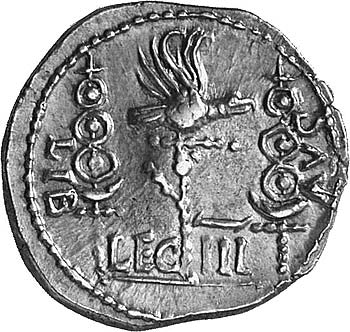
 Roman Military Equipment
Roman Military Equipment
Legionary Eagle
/ Vexilium/ Signum / Military Awards
& Decorations / Signal Horns / Beneficari
"In front of the eagles marched the prefects of the
camp, the tribunes
and the centurions of the first rank, all dressed in white, the other
centurions
marched with their respective centuries, bearing their arms proudly and
showing their decorations, as for other ranks they sparkled with
phalerae
and neck torcs"
Tacitus Hist II.49
Legionary Eagle / Signum:
No legionary eagle, thought to have been
of guilded silver or
bronze, has actually ever been found. We know what they must have
looked
like only from coins and from sculptures such as Traian's column.

Signum bearer grave stones, from Bonn (left) and Mainz (right)
Vexilium: the vexilium was a small square
of cloth attached to
a lance by a square piece. It was carried by cohorts and alae when the
main troops stayed in camp. On it were in bright colors symbols and
possibly
the name of the unit. One example was preserved in Egypt was 47 x 50
cms
and showed a victory on a globe. Additional medals attached to the
vexilium
showed the units faithful suppport to the emperor. E.g Tacitus writes
in
Hist I.41: " Seeing a band of armed men approaching the
standard
bearer of the cohort accompanying Galba tore off the Galba medal and
threw
it to the ground, at his signal all the soldiers showed their support
for
the new emperor Otho."
Large silver disc from Niederbieber, and Cohort
Standards for
COH VII RAETORUM, Landesmuseum Bonn
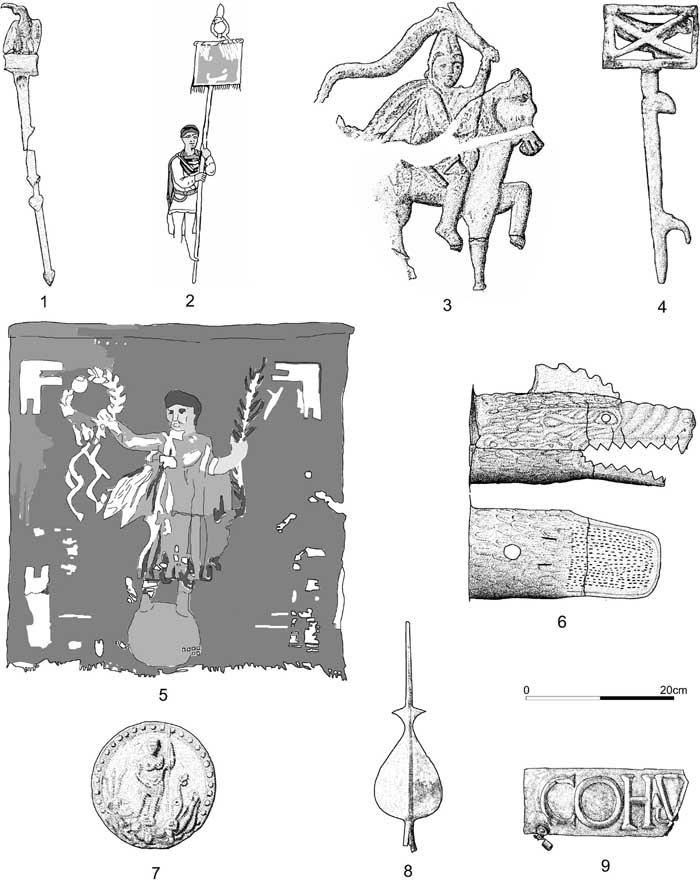 various military
signum types, including under number 6 a draco
various military
signum types, including under number 6 a draco
Drawings from Roman Military Equipment by
Bishop &
Coulston, Edition 2, 2006 © M.C. Bishop
Signumhanger with portrait of Nero. Private Collection.
Currently on
display at Museum Carnuntinum ( Austria, Bad Deutsch-Altenburg)
Published: Exhibition catalogue "Legionsadler und Druidenstab, F.
Humer,
2006," ISBN 3854602294"
The Beneficari
The beneficari are thought to have been a kind of road police, staffed by legionary soldiers.
Beneficarius applique (image
from a CNG auction in 2006)
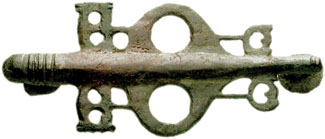
Leiden Museum, NL, 3 scabbard decorations, the left two for Mainz and
the lower one for a Pompeianus gladius.
To the right a balteus decoration showing amongst neo-celtic trumpets
also a beneficarius signum head (in silver)
Balteus and belt fittings showing various beneficarius signa
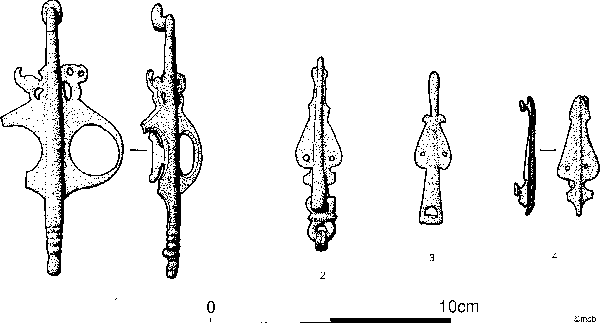
Drawings from Roman Military Equipment by
Bishop &
Coulston, Edition 2, 2006 © M.C. Bishop
Seal capsule in the shape of a beneficarius signum
lance
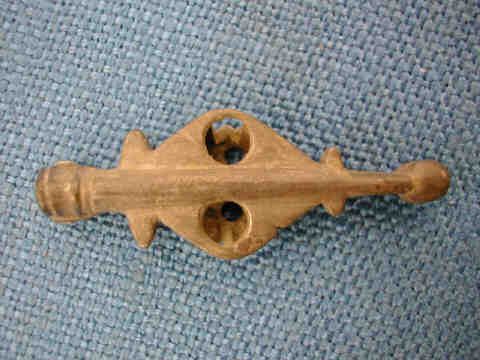
Military Awards & Decorations: Phalera and Torques:
Below grave stone is now in the Bonn Museum. The text reads:
"To Marcus Caelius, son of Titus, of the Lemonian voting tribe, from
Bologna,
a centurion in the First Order of legio XVIII,
aged 53; He fell in the Varian War. His bones - if found - may be
placed
in this monument. Publius Caelius, son of Titus, of the Lemonian
voting
tribe, his brother, set this up."
This centurio had several military decorations like torques
and phalerae proudly displayed on his breast
armour:
A Phalera, a medal of honor given to the bravest soldiers:
Set of silver Phalera from Lauersfort, RGZM Mainz :
Bronze Phalera, Carnuntum
Young prince in glass ? Köln Museum
Emperor Augustus, Vindonissa Museum, CH
Open work phalerae from the Guttmann collection
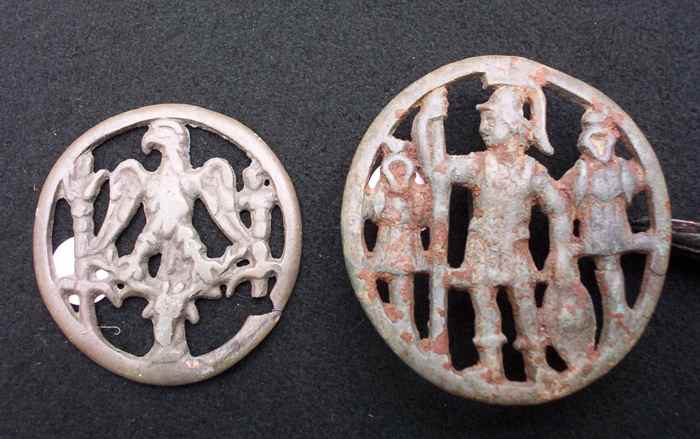
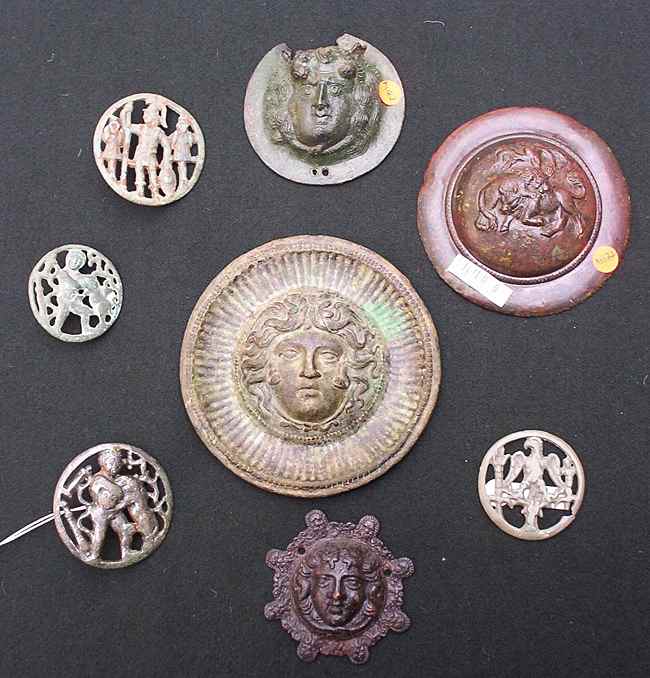
Image
courtesy David S. Michaels
/ Julian Dendy, Legio VI VPF USA and Legio XIIII R.M.R.S. UK
A balteus decoration
showing Hercules defeating
the lion, similiar to the two pieces shown in the image above in the
lower
left
Coins were also used for decorative and award purposes, below
an aureus
of Caracalla, Landesmuseum Bonn; also a Septimius Severus and a second
Caracalla
Constantinus Magnus, British Museum London
later bronze buttons with stylized emperor heads
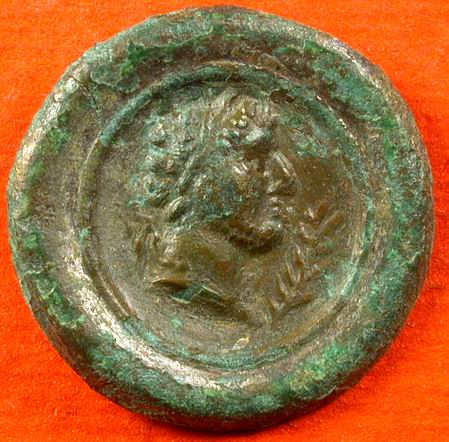
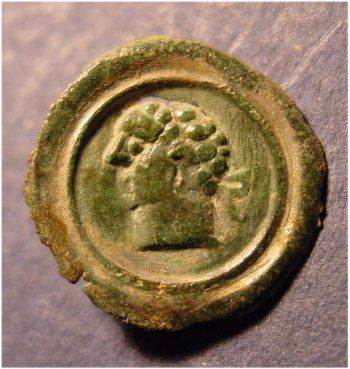
Signal Horns:
A signal trumpet from the Bonn Landesmuseum
Mouthpiece from the Scottish National Museum, Edinburgh
Related Sections of the Roman Numismatic Gallery: